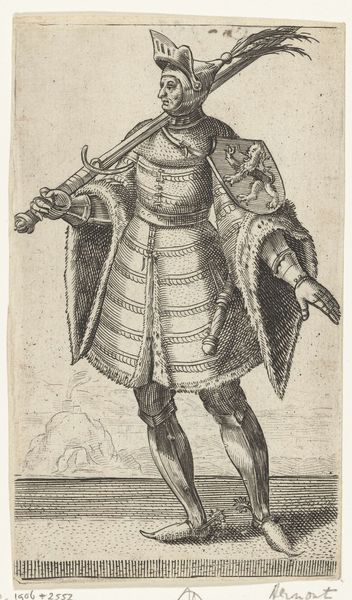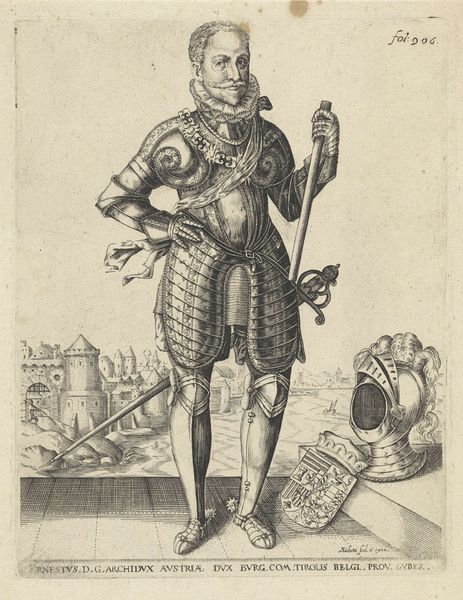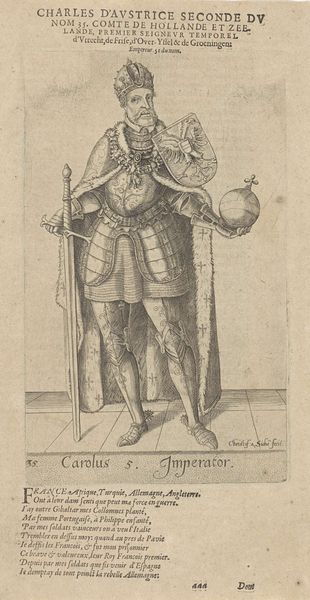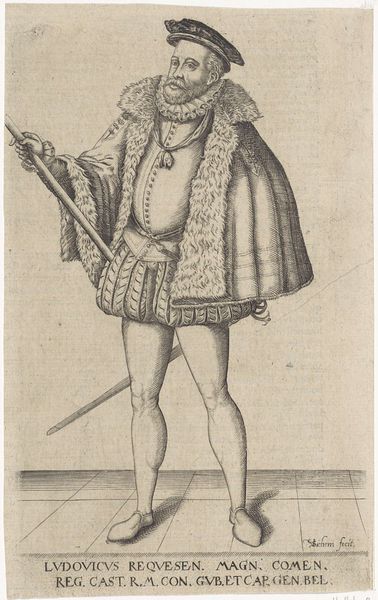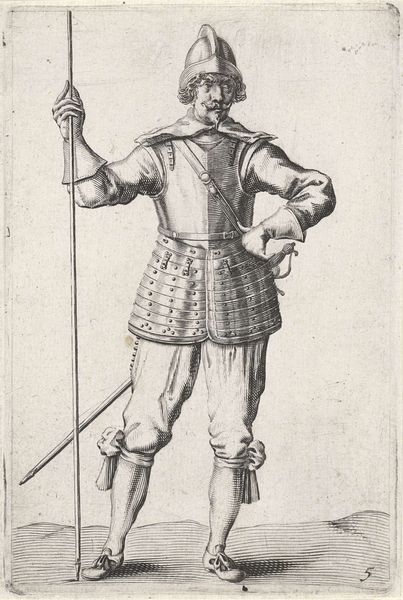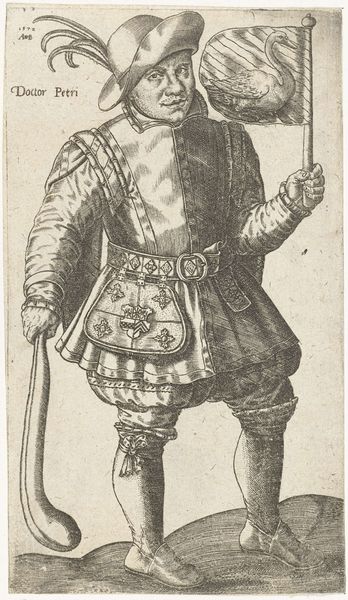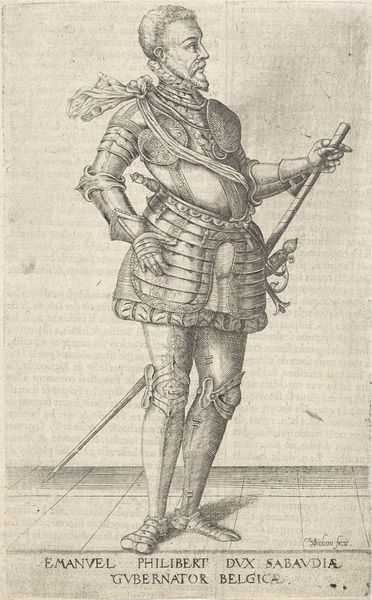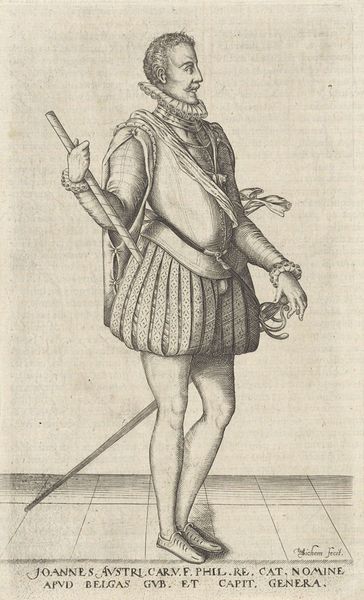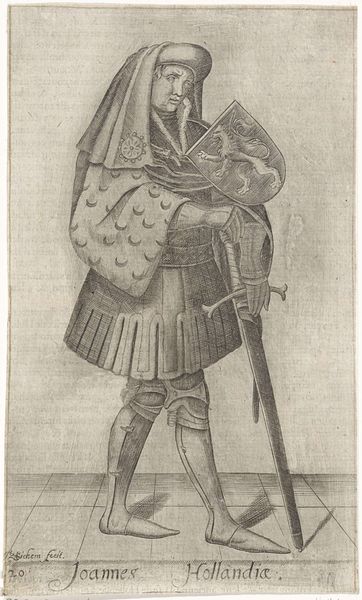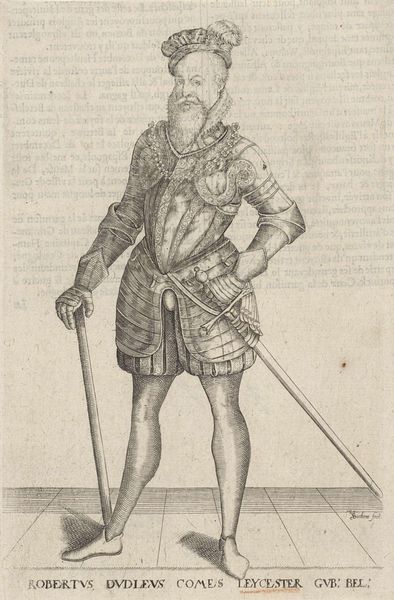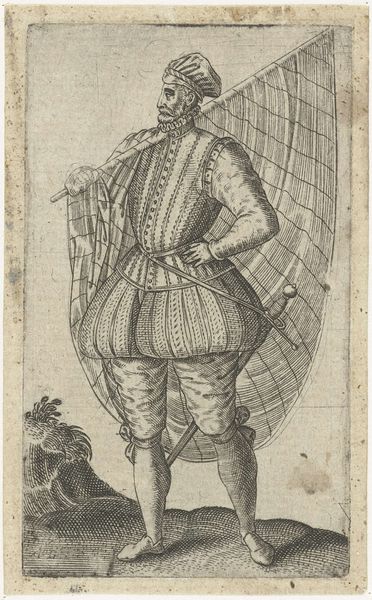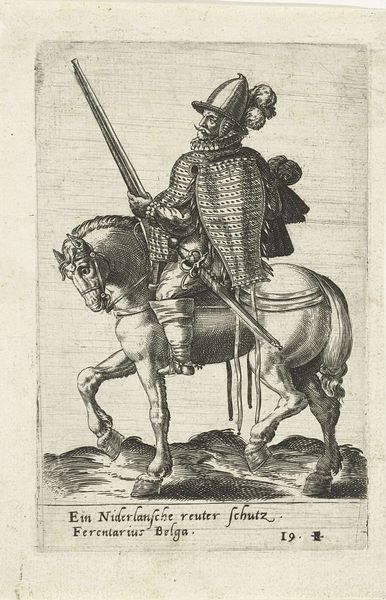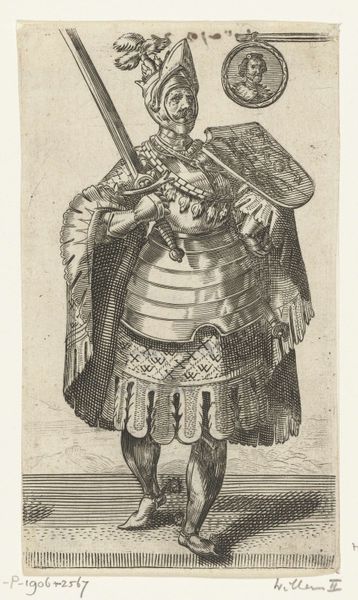
print, engraving
#
portrait
# print
#
11_renaissance
#
northern-renaissance
#
engraving
Dimensions: height 194 mm, width 122 mm
Copyright: Rijks Museum: Open Domain
Curator: Looking at this portrait, I can't help but focus on the intricate armor, almost like a second skin. The light reflecting off the metal suggests both power and vulnerability. Editor: Indeed. What we have here is an engraving titled *Portret van Ernst, aartshertog van Oostenrijk,* made by Christoffel van Sichem I, before 1601. This particular print resides here at the Rijksmuseum, and provides insight into the visual strategies employed during the Northern Renaissance to convey authority. Curator: It certainly seems crafted to broadcast authority, yet something feels slightly…fragile. Is that the engraving technique lending a sense of delicateness, or perhaps Ernst himself? He seems to hold the baton gingerly. What stories do the social structures encoded within the portrait tell us? Editor: The armor, a symbol of martial prowess, serves also as an interesting display of the wealth of the Habsburgs and the intricate artisanal techniques that their governance sustained. Portraits like these reinforced social hierarchy but also propagated imperial power. Note the meticulous attention to detail in his attire: every plate, every buckle is rendered with fidelity. How was it originally circulated and displayed? Curator: Considering that the engraving technique facilitated relatively easy reproductions, its circulation surely impacted the broader population’s perception of Habsburg power. But to consider gender and class, one has to acknowledge that the production, distribution, and interpretation of this portrait existed within a deeply patriarchal and class-divided context. To what extent did viewers challenge or internalize these representations? Editor: Excellent points! These printed portraits were part of the broader culture of self-promotion amongst the aristocracy and governing elite, but your intersectional reading brings to the forefront its place within unequal power dynamics. Its availability through print made it possible for these ideas to proliferate more readily through society. It's intriguing how even today, those contradictions of power and access persist. Curator: Agreed. We must always contextualize images like these within their socio-political and historical conditions. It's an exercise in critical analysis that transcends time.
Comments
No comments
Be the first to comment and join the conversation on the ultimate creative platform.
